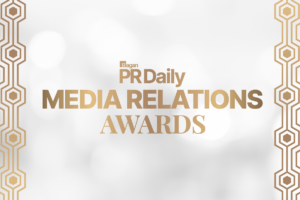What you need to know about the rise of Substack
It’s an opportunity to reach new audiences — but carries a few risks.

In the last month, more high-profile media personalities have announced they’re taking their talents to Substack.
From creator economy journalist Taylor Lorenz to bestselling media mogul James Patterson to magazine legend Tina Brown, these disparate professionals have all cited creative freedom as a reason for striking out on the email platform.
“I write about the attention economy, and I write about the content creator industry, and I just want complete autonomy to write and do and say whatever I want, and engage a little bit more directly with my readers, with the public, when it comes to my work,” Lorenz, a former Washington Post columnist, told The Hollywood Reporter. Other factors leading to the rush to Substack include continuing layoffs and the rise of young, Gen-Z journalists ready to make a splash on their own terms.
Substack now boasts a cumulative 35 million readers of its diverse slate of newsletters, 3 million of whom pay for content (Substack takes a 10% cut of any subscription fees creators receive). And those millions of readers are engaged and activated around thousands of newsletters on topics ranging from politics to beauty, from religion to movies.
“The engagement is higher because people have opted in, they’re welcoming it in their inbox and they’re getting it pushed to them,” said Meredith Klein, former Pinterest and Walmart communications executive who has successfully pitched Substackers.
Here’s what you need to know about this platform, successful pitches and the road ahead.
Convincing clients of Substack’s importance
One of the biggest issues Klein has found when it comes to pitching Substacks is convincing her clients that this is worth their time. After all, even big Substacks don’t have the cache of The New York Times or TechCrunch. But it does include many journalists who used to work at those outlets.
That resistance can be overcome by simply pointing to the many prominent people who have been interviewed by Substack journalists. Patterson, for instance, already has Bill Clinton lined up as an interviewee on his new Substack. So, if it’s good enough for the likes of a former president, it’s probably good enough for your principal.
Sharing metrics can also help overcome wariness — though nailing those down can be tricky. It used to be easy to share viewership data or newspaper circulation, but getting that information is harder in a digital world. Substacks are no exception.
Some newsletters do share media kits, Klein said, that include their circulation figures, open and clickthrough rates and more. But even absent those concrete numbers, there are a few ways you can reverse engineer data points. Looking at social shares and the engagement there, for instance, can help give you an idea of how the content spreads beyond its core platform. She also finds that frequently, Substack will create its own ecosystem, with creators sharing content from one to the next.
“I think that Substacks are somewhat akin to a syndicate,” she said, likening it to Yahoo and even the old days of Scripps-Howard.
The risks of a Substack
While Substacks have many benefits, they also have some drawbacks from a PR perspective. The same freedom that writers crave from the platform can mean a lack of checks and balances, without the traditional editorial heft to rein them back in. It also means that each Substack can be very personality-driven, relying on the personal brand of each journalist to get readers. That might mean a looser tone than you could expect from traditional media.
“You might get some of those one-line zingers … because they’re able to do that where (before) that might have get gotten edited out,” Klein said.
Because of that, Substacks might be a better fit for pitching more B2C or less regulated industries. It might be worth a pause before going all-in with your pharmaceutical or financial services client, Klein said. But it all comes back to researching and knowing the outlet you’re pitching.
“You might test and learn with a smaller announcement, not a C-suite executive, just to start,” Klein said.”
Good media relations is good media relations
Substack is essentially a platform, like TikTok or Instagram, that is home to thousands of individual newsrooms. There is no “pitching Substack,” but rather pitching the many publications that call the platform home.
And the same principles that apply to pitching Substack authors also apply to pitching most other media sources.
Just like traditional journalism, Klein said, Substackers cover different topics in different ways. Some might lean toward reported features, while others might do more Skimm-esque roundups that link out without doing an interview. Some might be open to being pitched while others are not.
“Do your research,” Klein urged. “Identify the Substacks, understand their format, flow, cadence. Are they analysis versus feature versus commentary versus roundup? Then reach out.”
Then, it’s a matter of nurturing that relationship into the future.
Allison Carter is editor-in-chief of PR Daily. Follow her on Twitter or LinkedIn.







